大自然的时间胶囊 - chucu平板电脑
原始 - 2015年3月13日,星期五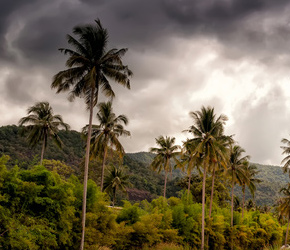 |
|
|
|
由Misaki Imagawa
In 1950 Indonesia, the monsoon season was just beginning, drenching the island of Sulawesi with damp, humid air. Heavy clouds hung low over the tropical forest, obscuring the peaks of the nearby mountains. A small group of women were making their way through the lush forest, bearing baskets full of ripe fruits, and following doggedly on their heels was a young girl clutching a bright red mango. She turned it over and over in her little hands, so delighted with her find that she hardly noticed the forewarning of the darkening sky and the downpour to follow. As she rushed to keep up with the others, hurrying along the dirt path to avoid the rain, a rustling in the bushes distracted her. She stopped to investigate and noticed a family of palm civets, or toddy cats, spooked by the rolling thunder. When she looked up, panic sunk in – the adults were nowhere to be seen! She was all alone.
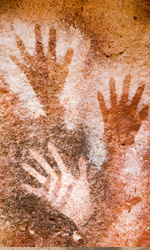 |
|
|
|
这个女孩跑一样快,但很快就失去了her way amid the maze of paths. Just as the torrential rain started, she burst into a clearing at the base of a rocky outcropping and saw a cave opening where she could hide. As her eyes adjusted to the darkness, she wandered deeper into the cave, lured by curiosity. Outside, the rain ended as quickly as it had started and filtered light illuminated the walls inside. The girl’s eyes filled with wonder at what she saw. An image appeared before her; it was an animal painted in deep red on the wall of the cave. Beside it, numerous hand prints marked the wall. Stepping closer, she pressed her own palm against a print that was the same size as her hand. Little did the young girl know that half a century later, archeologists would discover this was the oldest cave painting ever created by humankind.
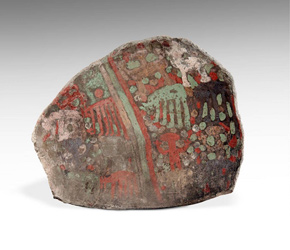 |
|
|
|
在不同的时间,在不同的时间发生了类似的发现。在秘鲁的阿雷基帕(Arequipa)的山丘上,一群学者发现了迄今未经探索的洞穴。在这些地下室内,他们发现了一堆油漆的兵马俑片。它们似乎已被仪式分解成矩形和梯形形状,并用油漆在一侧装饰。这些绘画描绘了上面和一系列点的四足动物和人类,并奇怪地让人联想到古老的洞穴绘画。学者指出了这些点的重要性,猜测他们描绘了雨。由于Chucu是秘鲁前秘鲁“水神”提供的当地供应中心,因此据信,提供了涂漆的碎片,希望能为农作物和收获提供良好的降雨。这些平板电脑的创建在公元1300 - 1600年之间。
尽管关于涂上Chucu片的人有很多东西可以发现,但可以肯定地说,如果洞穴没有保护它们,就不会发现工件本身。洞穴通过绘画和保存人工制品为我们提供了有关人类历史的宝贵信息,及时冻结了原本会永远消失的东西。
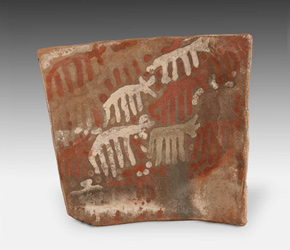 |
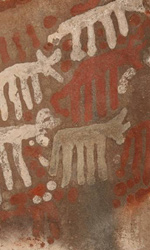 |
||
|
原始ID#A1000-009 |
|||
许多古老的文物已经从世界各地的洞穴中发掘出来,在这些洞穴中,干燥,持续的气氛有助于防止数千年来恶化。在西非的马里,砂岩悬崖上有高高的洞穴,这些山悬崖为泰勒姆人提供了埋葬地,以避免山洪泛滥。尽管多贡人自14世纪以来就一直居住在这片土地上,并实践了同样的习俗,但这些较旧的墓穴揭示了不属于多贡习俗的文物。这位考古学家将大量有关土著人民及其文化的新信息。同样,在西岸的库姆兰洞穴内,将近1000份圣经卷轴可以追溯到公元前400年。被奇迹般地保存。这为许多领域的学者提供了深刻的了解。
在发现Sulawesi洞穴绘画之前,人们认为最早的洞穴艺术起源于欧洲。法国的沙文岛洞穴绘画的日期在30,000至32,000年前;也许最著名的是拉斯卡(Lascaux)洞穴中的绘画,其历史可追溯到15,000至17,000年前。但是,最近对苏拉威西发现的洞穴绘画的研究表明,它们的历史在35,000至40,000年之间。这些新发现的信息肯定了艺术的自我意识,而抽象的思想并非仅在欧洲发展,而是在世界其他各个地区同时发展。尽管研究人员对这些画的确切功能仍然不确定,但他们仍然透露了创造它们的史前民族。
From prehistoric times, caves have been used as resources for humankind, and unbeknownst to those who created the paintings, scrolls, artifacts and tablets found inside, their actions would subsequently connect our time to theirs. In this sense, caves have proven to be, and will continue to be, nature’s most powerful time capsules. Inside their stone walls, thousands of years of knowledge often lay waiting to be discovered. Sometimes, all it takes is the curiosity of a lost girl to unearth the secrets of the past.
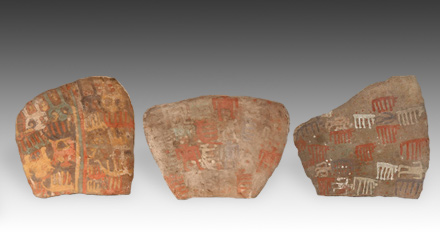 |
|
|
下载此博客:亚愽娱乐
{module_literature,i,139109}